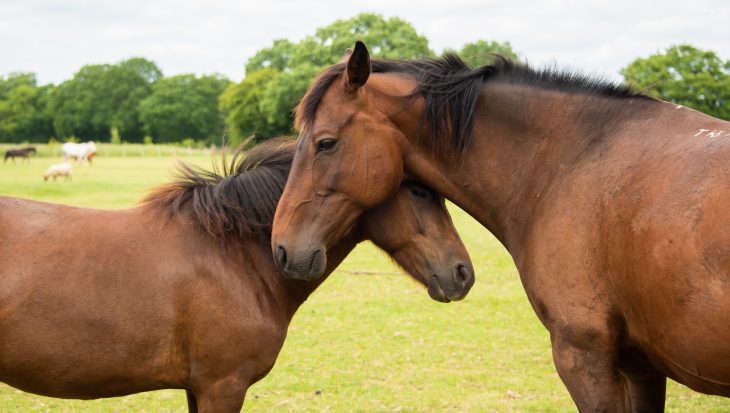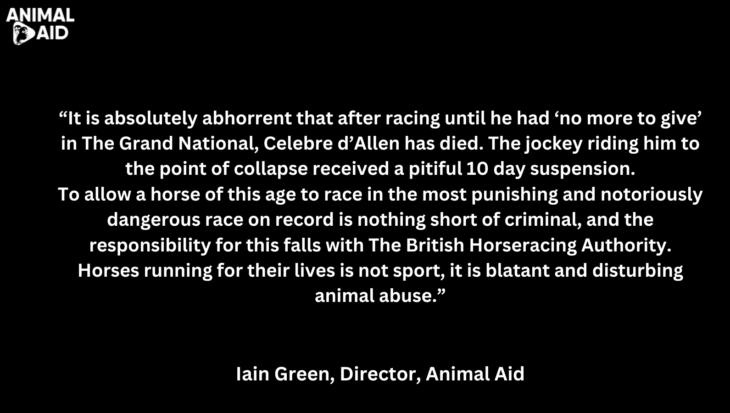Just one week before the much-hyped Cheltenham Festival, a new Animal Aid report reveals that equine fatalities at the Gloucestershire course occurred so regularly during 2014 that there was a 50 per cent chance of a horse dying at any day’s racing at the venue.
In all, eight horses perished in just 16 days of racing – a dismal record matched only by Wetherby in West Yorkshire, where nine horses died in 18 days.
The figures are drawn from Animal Aid’s online database, Race Horse Deathwatch. A total of 160 equine fatalities were recorded in 2014, 29 more than in 2013. But the true death totals are very likely to be much higher. While racing’s regulator, the British Horseracing Authority (BHA), refuses to make public the names of individual horses killed and the racecourses on which they died, it did respond in May 2013 to a Parliamentary Question by revealing the on-course fatality figures for the three years 2010 – 2012. Collectively, they were around 30 per cent higher than Animal Aid was able to collate and publish on Deathwatch.
Among key findings from the new Deathwatch analysis, relating to 2014, are:
- 14 courses saw two horse fatalities in a single day’s racing.
- Four courses saw two horses die in a single day’s racing on two occasions.
- There were multiple deaths at the premier National Hunt and Flat racing festivals: Cheltenham (five fatalities) and Royal Ascot (four).
- The five courses with the highest number of deaths in 2014 were: Southwell AW (nine deaths), Wetherby (nine), Cheltenham (eight), Worcester (eight) and Wincanton (six).
- The most lethal racecourses in relation to their racing disciplines were: Wetherby and Cheltenham in National Hunt (jump) racing; Ascot on the flat; and Southwell’s All-Weather track.
- 38 of the 40 National Hunt racecourses saw at least one fatality.
- 24 of the 32 Flat (turf) courses saw horses die.
- All four All-Weather courses saw fatalities.
Says Animal Aid Director Andrew Tyler:
‘British racing often claims that it is among the best-regulated animal activities, with a strong welfare ethic. Yet it pitches horses into a “sport” in which there is a high risk of serious injury and death. At an average jump racecourse, the chances of a fatality on any given day’s racing is nearly 20 per cent. On some courses, it is more than twice that rate. Little wonder that at least 160 horses lost their lives on British racecourses in 2014 – and the true total is almost certainly much higher. Routinely subjecting horses to such predictable and avoidable harm is outrageous. The main animal protection legislation, the Animal Welfare Act 2006, demands that those responsible for animals take steps to ensure that they are “protected from pain, suffering [and] injury”. This is clearly not happening.’
Notes to Editors

